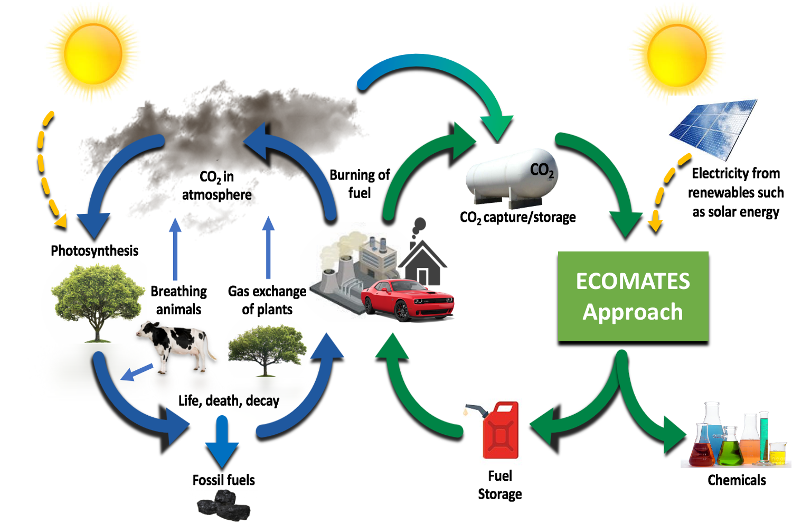ECOMATES Project
The electrochemical conversion of CO2 is a promising technology to overcome several challenges facing the implementation of carbon-neutral energy sources as it provides a means of storing renewable electricity in a convenient, high energy-density form. CO2 is considered as the furthermost thermodynamically stable oxidized state of carbon. Consequently, CO2 reductions using different approaches need high threshold energy input to overcome thermodynamic barriers. Thus, it is necessary to find suitable catalysts to boost the conversion kinetics and enhance the product selectivity. Main aim of this proposal is to make a significant breakthrough in the development of the electrochemical CO2 conversion route for the production of value-added chemicals. Both C1 (CO and formic acid) or C2 (ethylene) products are targeted. This objective will be achieved via the advancement of novel catalyst materials, chemistries and electrolyser cell designs. In this respect, ECOMATES’ ambition is to contribute to help the environment in utilizing the CO2 released from anthropogenic sources and thus assisting the natural carbon cycle. An electrolyser based on the catalysts developed within ECOMATES once coupled with a renewable energy source such as photovoltaics would “mimic” the role of photosynthetic plants, by converting and storing energy into chemical bonds by electrochemical reduction of CO2 into valuable chemicals and fuels (see figure below).

This ambitious plan will be achieved within this Marie-Curie Doctoral Network by training a new generation of scientists who will bring innovation in the field of electrocatalysis with particular emphasis on the design of new nanomaterials and nanostructures based on Cu/M bimetallic compounds (M indicates a secondary metal species) with improved selectivity and efficiency towards CO2 reduction to value-added products. Specific scientific and technological objectives of the proposed research and training programme will be:
- the synthesis and characterization of Cu/M nanomaterials as innovative CO2RR electrocatalysts,
- the understanding and design of CO2RR Cu/M catalysts via simulations and in situ operando measurements,
- the realization, characterization and integration of innovative electrodes into a CO2RR electrolyser.
Achieving these objectives and bringing innovation in the growing field of electrocatalysis requires to instruct a new generation of scientist trained in an interdisciplinary, intersectoral and international environment, as the one guaranteed by the complementary, comprehensive and diverse know-how of the teams involved in this consortium.

